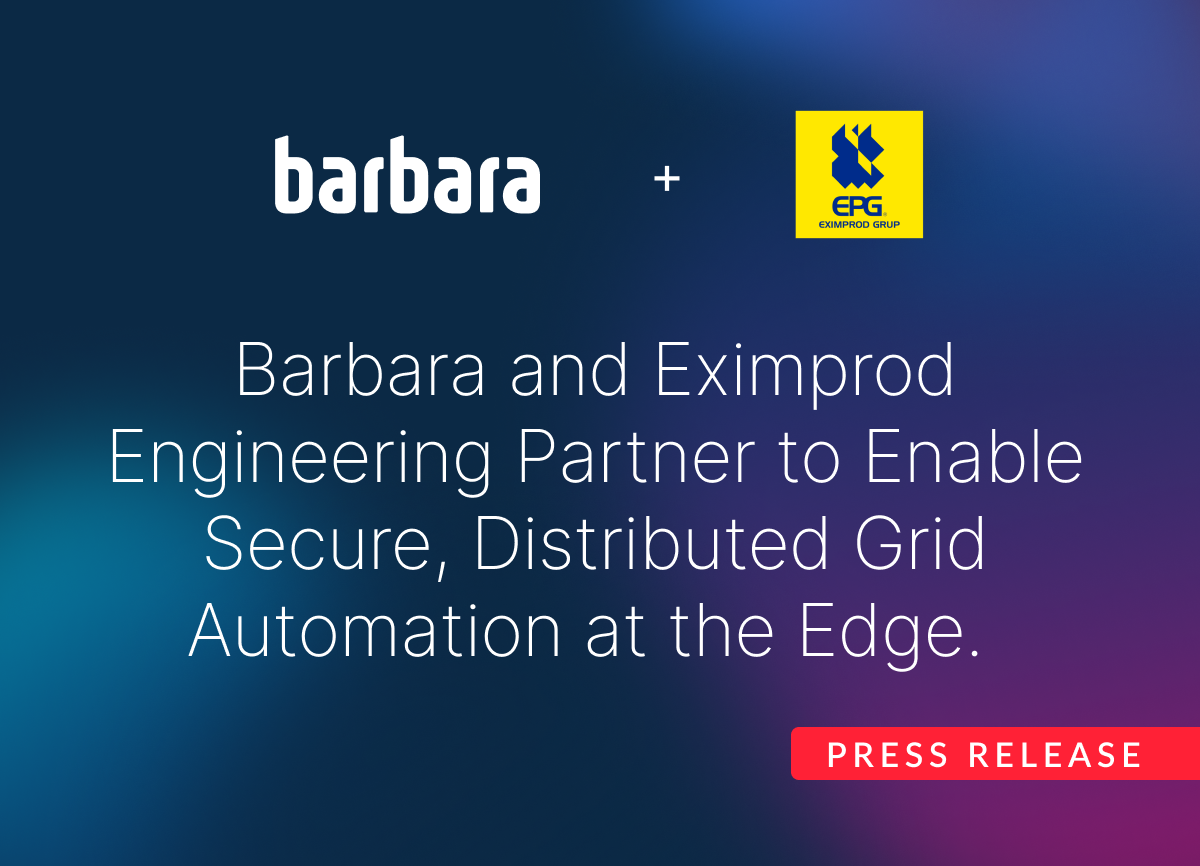Splunk at the Edge with Barbara: Powering Operational Intelligence with AI
In the world of Industry 4.0 and distributed infrastructures, real-time data processing is key to efficient decision-making. Splunk, a leading analytics platform, now integrates with Barbara's edge orchestration platform, enabling deployment on edge nodes and combining its capabilities with artificial intelligence (AI) models to maximize its potential.
What is Splunk and Why is Relevant at the Edge?
Splunk is a powerful software platform designed to index, analyze, and visualize large volumes of data in real time. Widely used across industries from cybersecurity to critical infrastructure management and industrial process optimization, it helps organizations turn data into actionable insights.
Traditionally, Splunk has operated in cloud or data center environments. With edge computing, Splunk can now be deployed closer to the data source, delivering faster insights, improving bandwidth efficiency, and enabling early anomaly or failure detection.
Splunk Applications in Barbara's Marketplace

Barbara's marketplace offers two powerful Splunk applications tailored for edge deployments:
- Splunk Ingester: This application seamlessly integrates MQTT - based data with Splunk for real-time analysis and monitoring. Acting as a bridge between an MQTT broker and a Splunk server, it efficiently receives, processes, and securely transmits data. Ideal for edge environments, remote monitoring systems, and real-time event tracking, Splunk Ingester ensures smooth data flow from edge devices to the central Splunk platform, enabling enhanced insights and analytics.
- Splunk Server: Designed to bring advanced data monitoring and analysis capabilities directly to the edge, the Splunk Server enables real-time collection, monitoring, and analysis of machine data. This pre-configured solution minimizes latency and bandwidth usage while offering powerful search functionalities, customizable dashboards, and seamless integration with various data sources. It empowers businesses to gain actionable insights and enhance operational efficiency within a localized and scalable edge environment.
Combining Splunk with AI Models at the Edge

One of Barbara's platform's biggest benefits is its ability to deploy AI models alongside applications like Splunk on edge devices. This allows real-time inferences to be applied to collected data before sending it to the cloud or a data center, optimizing resources and reducing centralized processing loads.
Some key use cases include:
- Predictive Maintenance: AI models can analyze sensor data from industrial equipment, identify failure patterns, and generate early alerts through Splunk.
- Real-Time Cybersecurity: The combination of Splunk with anomaly detection models enables the identification of suspicious network behaviors and the implementation of immediate measures.
- Process Optimization: AI can detect operational inefficiencies and propose real-time adjustments to maximize performance.
A Real Use Case: Industrial Data Processing with Splunk
A typical real-world implementation of Splunk at the edge involves integrating multiple industrial data sources, AI models, and monitoring tools to ensure seamless data analysis and real-time decision-making.

Data Flow Overview
1. Industrial Data Collection: Data is gathered from sensors, PLCs, or other industrial equipment using Barbara’s industrial connectors, including OPC UA, Modbus, BACnet, IEC104, etc.
2. MQTT Broker as a Communication Backbone: A locally deployed MQTT broker acts as the central hub, receiving data from industrial connectors.
3. AI Model for Predictive Analysis: A ScikitLearn AI model deployed on the edge node processes sensor data and publishes inference results back to the MQTT broker.
4. Model Monitoring and Performance Control: A dedicated Model Monitoring application tracks AI model KPIs, displaying them in dashboards.
5. Data Ingestion into Splunk: The Splunk Ingester application reads data from the MQTT broker and sends it to either a cloud-based Splunk instance or a locally deployed Splunk Server.
6. Local Data Storage and Visualization: Data is also stored in an InfluxDB database, with a Grafana dashboard providing a real-time view of stored information.
7. Alert Management: The Alert Manager application monitors:
.- The health of all applications, triggering alerts if any go offline.
.- AI model performance, alerting users if KPIs exceed predefined thresholds.
.- Industrial data values, generating alarms if critical parameters are breached.
.- AI model inference results, ensuring any anomalies trigger immediate alerts.
This architecture ensures seamless data flow from industrial devices to Splunk, allowing organizations to gain real-time insights, detect anomalies early, and optimize operational efficiency.
All the applications used in this use case, including the MQTT Broker, ScikitLearn AI model, Model Monitoring, Splunk Ingester, Splunk Server, InfluxDB, Grafana, and Alert Manager, are available now in the Barbara’s Marketplace, simplifying deployment and integration for industrial environments.

Advantages of Deploying Splunk at the Edge with Barbara
Barbara provides a robust and secure platform for orchestrating applications and AI models on edge nodes, offering the following advantages:
- Simplified Deployment: Through Barbara's marketplace, Splunk can be easily installed on edge nodes without complex configurations.
- Secure and Scalable Execution: Barbara ensures a secure, managed, and scalable execution environment, optimizing resource use on edge devices.
- Real-Time Processing: The ability to run analytics and AI models directly on the edge node reduces cloud dependency, improving response times.
- Compatibility and Flexibility: Barbara enables Splunk's integration with other industrial services and applications, adapting to different environments and operational needs.
Conclusion
Deploying Splunk on edge nodes with Barbara is a game-changer for operational intelligence. By combining real-time analytics with AI models, companies can enhance efficiency, security, and responsiveness to critical events. With Barbara, organizations can bring the power of Splunk closer to the data source, unlocking a new level of performance and intelligent decision-making in edge computing.
Interested in knowing more? contact us
.png)


.png)





